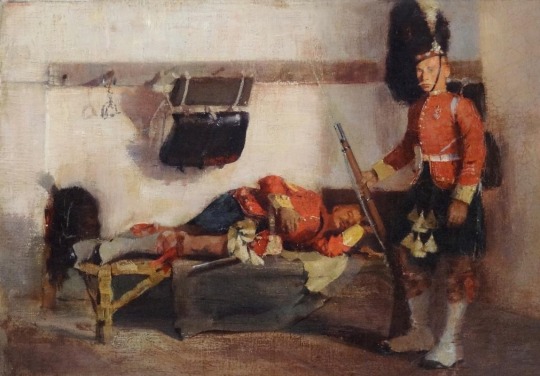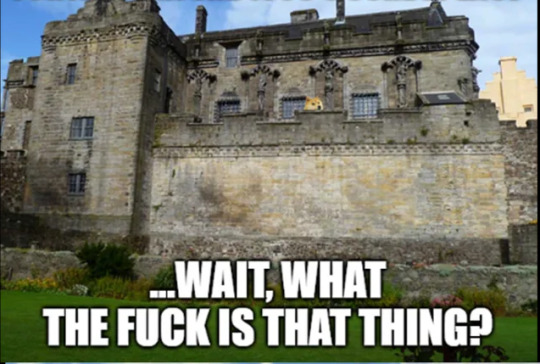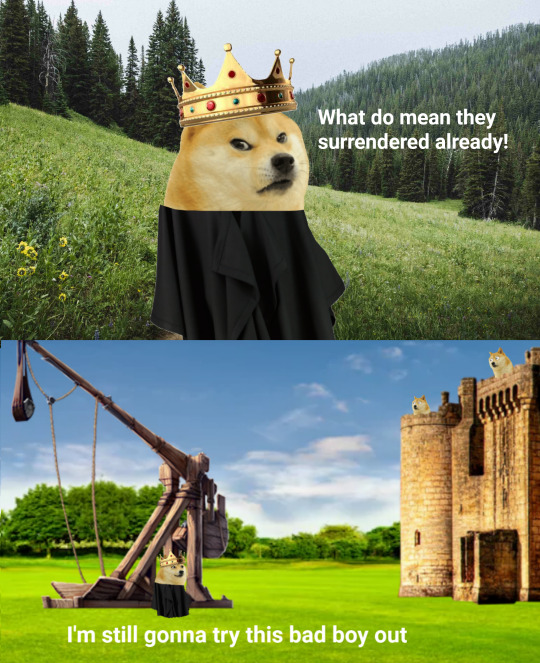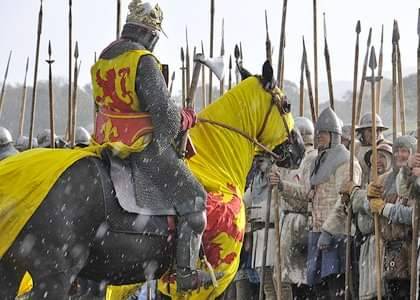#Stirling castle
Explore tagged Tumblr posts
Text

Late Saturday at Stirling Castle
130 notes
·
View notes
Text

The Guard Room, Stirling Castle by William Kennedy, 1887. Kennedy was part of the Scottish art movement known as the Glasgow Boys. The piece depicts one soldier of the Argyll and Sutherland Highlanders about to head out on guard duty while another takes a break.
85 notes
·
View notes
Text




Today, I received an email confirming that I am officially graduating from my double degree in December. I can hardly comprehend that my four years of study are over. It doesn't feel real.
My tentative plan for 2025 is to find a part-time job relevant to what I've studied (public relations/creative and professional writing) and spend my free time working on my manuscript. Not a great plan for my personal finances, but I know I've got to give my dreams of being a published author a proper chance.
I'm completely exhausted after flying back to Brisbane from Edinburgh (30+ hours of travel). I had such an incredible time away with my partner; we explored all over Scotland. It really sucks that Australia is so far away from so much of the rest of the world, but I'm very grateful that we were able to save up and properly enjoy this experience.
#studyblr#mine#university#studyspo#scotland#november#stirling castle#stirling#studying#study motivation#history
11 notes
·
View notes
Text

Statue of King Robert the Bruce, Stirling Castle
53 notes
·
View notes
Text

Football match between British and French prisoners of war at Camp Limburg in 1918. The footballer marked with an 'X' is said to be Corporal Kennedy.
#world war 1#great war#belgium#france#first world war#great britain#memorial#world war i#world war one#stirling castle#prisonar
18 notes
·
View notes
Text

17 notes
·
View notes
Text





Stirling Castle, Scotland
Garett Photography
13 notes
·
View notes
Text



#doge#scotland#Edward I#stirling castle#trebuchet#Scottish Wars of Independence#Loup de Guerre#le irritating people looking through tags has arrived#le they're all relevant tho has arrived
55 notes
·
View notes
Text



#photography#united kingdom#scottish#landscape#my photgraphy#scotland#tourisim#stirling castle#castles
6 notes
·
View notes
Text

2023_05_20
7 notes
·
View notes
Text


On 8th January 1313 the forces of Robert Bruce seized Perth from the English garrison.
This victory was significant as it brought all of Scotland north of the Forth under Bruce's control. However, it was also a source of embarrassment for later Scottish writers seeking to cast King Robert in a positive light, as the events of 8th January seem to have degenerated into a bloodbath.
By 1313, the tide of the war had very much turned in Bruce's favour. He had defeated his main Scottish opponents at the Battles of Inverurie and the Pass of Brander in 1309, survived an English invasion of Scotland in 1310-11, and even begun raiding into northern England. 1312 had ended on something of a sour note when the barking of a dog had thwarted a Scottish attempt to capture Berwick by surprise, but undeterred Bruce marched his men north to lay siege to Perth.
Perth was no easy target - its castle had not been rebuilt since a flood a century earlier but it was still protected by a wall and a water-filled ditch. It seems that Bruce was counting on the English being unprepared for the Scots to keep up the military pressure on them during the frigid Scottish winter (normally, the campaigning season would last from spring to autumn at the most, as I have pointed out in previous posts, I call it “the battle season”)
Both the contemporary Lanercost Chronicler and the late Scottish writer John Barbour blame the fall of Perth at least in part on the negligence of the garrison. On the night of 7th January, under cover of darkness, the Scots surged across the ditch in force and threw ladders against the wall, pouring into the town and overwhelming the unprepared defenders. By the morning of the 8th, Perth belonged to Bruce.
The aftermath of the capture of Perth is a source of some disagreement among contemporary and near contemporary historians, possibly because many of those writers felt uncomfortable with the facts as they saw them. The earliest surviving account comes from the Lanercost Chronicle, which claims that those in the town 'who were of the Scottish nation' were put to death, although the Englishmen there were allowed to return home.
The earliest surviving Scottish account of the incident - written by John Fordun in the 1360s - states that 'the disloyal people, both Scots and English, were taken, dragged and slain with the sword', although he attempts to mitigate this by emphasising that their disloyalty is what earned them this fate and adding that the king spared anyone who begged for mercy.
Writing about a decade after Fordun, the Scottish poet John Barbour - who was writing for Robert II, addressed this aspect of the capture of Perth simply by denying it, claiming that Bruce had specifically ordered his men not to kill anyone unless they refused to surrender without a fight. Despite Barbour's protestations, it would seem that the capture of Perth was accompanied by considerable bloodshed. If we are being generous to Bruce - and most historians who have written about the fall of Perth have been inclined to be just that - any executions after the town's capture can be understood as a very emphatic way of discouraging disloyalty among his subjects in other towns around the kingdom, a common enough tactic in medieval warfare, these were brutal times.
King Robert could now claim to control all of Scotland north of the Forth. Further offensives later in the year secured Bruce's control of the south-west, so that by the end of the year only Lothian and the Borders remained in English hands. By late spring The Bruce controlled almost all of Scotland .
Stirling castle was still under the control of English forces but was under siege from the Scots led by Edward Bruce. Bruce and the English commander, Sir Philippe de Mowbray, came to an agreement that if English forces had not reached the castle by midsummer 1314, Mowbray would surrender the castle to the Scots. Bruce even let Mowbray leave the castle to inform the English king of the agreement, the scene was set for the Battle of Bannockburn.
22 notes
·
View notes
Text



Highland Dress from Stirling, Scotland dated between the Late 18th and Early 19th Centuries on display at the Argyll and Sutherland Highlanders Museum in Stirling, Scotland
This kilt, sporran and sword belts belonged to Lieutenant General Duncan Campbell of Lochnell. From 1796 to 1837 he had a number fo different ranks but was the regimental colonel of the 91st (Argyllshire Highalnders) Regiment of Foot. He also served as a Member of Parliament from 1809 to 1818 general election for Ayr Burghs in Ayrshire for the Whig party.
The belt is decorated with the family motto "Arma Parata Fero" ("I carry arms in readiness") and a crest of a hand clasping a lance.
Photographs taken by myself 2022
#fashion#scotland#scottish#history#british empire#georgian#hanoverian#argyll and sutherland highlanders museum#stirling castle#barbucomedie
5 notes
·
View notes
Text
youtube
Find out more about the materials and tools used to build Stirling Castle. Join Peter the Master Mason for our Building Stirling Castle series and find out about the makers, materials and methods used to build Stirling Castle. This is a series of 6 STEM-focused films suitable for Early Years – P3 audiences. Find out more about castle building in our How to Build a Castle resource at https://thinglink.com/card/1566475657... Explore more learning resources inspired by the past at https://hes.scot/learn
2 notes
·
View notes
Text

#medieval art#musings#castle#history#stirling castle#aethestic#scotland#battle armor#medieval#historical#british royalty
1 note
·
View note
Text

Corporal Colin McNab's uniform. During a bayonet fight, McNab was stabbed in the leg by a German soldier. Colin nevertheless managed to kill the German. Note the hole in the kilt!
#world war 1#great war#belgium#france#first world war#great britain#memorial#world war i#world war one#stirling castle
7 notes
·
View notes
